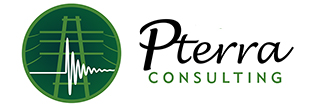Whereas, power plants using renewable energy sources were not too long ago considered exotic, today they are the new face of energy — the wind mill replacing the smokestack as the symbol of electric power generation. Spurred by governmental incentives, renewable energy sources are rapidly changing the nature and composition of power systems. They are still a fraction of the overall energy portfolio, but the renewables’ level of penetration of energy markets is growing. In most US RTOs and power pools, the queue for interconnection projects is dominated by renewables, primarily wind farms.
Archives for Wind Farms
Wind Farm Integration: On the Use of Agreggate Models
As an increasing number of wind turbines are connected to the power system, more and more wind farm interconnection studies are requested. Usually a wind farm consists of tens of wind turbines and the interconnecting cables. The wind turbines are mostly the same type for each wind farm, but the cables interconnecting these wind turbines vary in length, capacity and configuration, depending on the farm design, terrain, easements, etc.
Top 3 Reasons
Here are the top 3 reasons a transmission analyst may need to avoid modeling each turbine and each cable in the wind farm for the interconnection study, including:
On Using Aggregate Models of a Wind Farm
(A serialized and expanded version of this article can be found here)
As an increasing number of wind turbines are connected to the power system, more and more wind farm interconnection studies are requested. Usually a wind farm consists of tens of wind turbines and cables. The wind turbines are mostly the same type in one particular wind farm, but the cables interconnecting these wind turbines vary in length, capacity and configuration. A transmission analyst may need to avoid modeling each turbine and each cable in the wind farm for the interconnection study for one or more of several possible reasons:
- It is laborious to setup the detailed model. For example, a 300 MW wind farm would comprise of 200 1.5-MW wind turbines interconnected at a distribution level voltage such as 34.5 kV in a feeder network similar to that of a suburban housing development. The simulation software for power flow, short circuit or stability analysis may not accommodate carrying detailed models for all the existing and proposed wind farms. To consider the dimensions, take the case of a system with some 5000 MW of installed wind capacity. Detailed modeling of the wind farms would require about 4000 turbine models, 5000 additional nodes and the same number of additional branches in the database.
- The detailed model requires representation of distribution level feeder circuits that increase the “spread” of branch impedances in the power flow model. “Spread” here refers to the range of impedances included in the database. (see further discussion about spread or diversity in the article, “Converging the Power Flow”). Too much spread can lead to difficulties in solving, or converging, the power flow.
In view of all the above reasons, it may be sufficient to aggregate groups of wind turbines into equivalents that capture their net impact on the transmission system.
The Renewables: Part 1 – Wind Farms

The renewables are here! Whereas, power plants using renewable energy sources were not too long ago considered exotic, today they are the new face of energy — the wind mill replacing the smokestack as the symbol of electric power generation. Spurred by governmental incentives, renewable energy sources are rapidly changing the nature and composition of power systems. They are still a fraction of the overall energy portfolio, but the renewables’ level of penetration of energy markets is growing. In most US RTOs and power pools, the queue for interconnection projects is dominated by renewables, primarily wind farms.
Our particular interest in renewables is their unique technical interconnection and operations impacts on existing power systems. Also, we are concerned about the long-term impact from the reliability planning perspective of integrating the system with high penetration levels of renewables. Whereas renewables in practical systems were primarily hydro-based and geothermal, the new renewables are making their own statements. These include wind farms (both onshore and offshore), solar and biomass.
